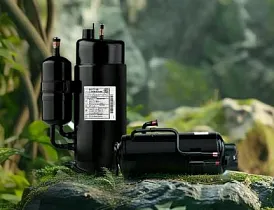The new Ultra-low Super Heat Module from Advansor has been running and tested in more than 30 installations for the last year with customers like Carrefour, where measurements show energy savings above 30% compared to the cooling old system.
The Ultra-Low Superheat Module allows the evaporators to run with very low superheat setting without having the risk of liquid CO2 returning to the compressors. Typically, the evaporation temperature can be increased by around 4-5 Kelvin, which will provide energy savings around 10%.
However, depending on the geographical location and additional technology like parallel compression and ejectors much higher savings can be obtained.
Ultra-low super heat can provide energy savings up to 30% and a pay-back time down to 1 year for when using refrigeration systems
Positive side effects
A positive side effect when used in a supermarket is less defrost of the cabinets, where up to 75% less defrost has been measured.
For other industries there might be other positive side effects. For instance, a nursery experienced much less dehumidification when storing potatoes ensuring a higher weight and thereby sales price.
The separate model is always fully factory tested and can be attached to the cooling rack or separately allowing it to fit into narrow and small machines rooms, as it can be placed away from the rack itself.
Advansor can calculate the energy savings with the Advansor Energy Tool, so energy savings and pay-back time can be estimated for specific projects.
How does it work
The module consists of a suction accumulator, internal heat exchanger and optional ejector.
The suction accumulator is used to capture any liquid coming back from the evaporators and to separate gas from the liquid.
The primary function of the internal heat exchanger is to evaporate and superheat the gas, and liquid CO2 coming from the suction accumulator. The secondary function is to sub cool the liquid line, resulting in less mass flow in the complete installation and reducing pressure drop.
The ejector is used to empty the suction accumulator of liquid, and if using a gas ejector, also to move flash-gas from MT compressors to parallel compressors.
If you do not have an ejector, the remaining liquid is evaporated in the internal heat exchanger.
